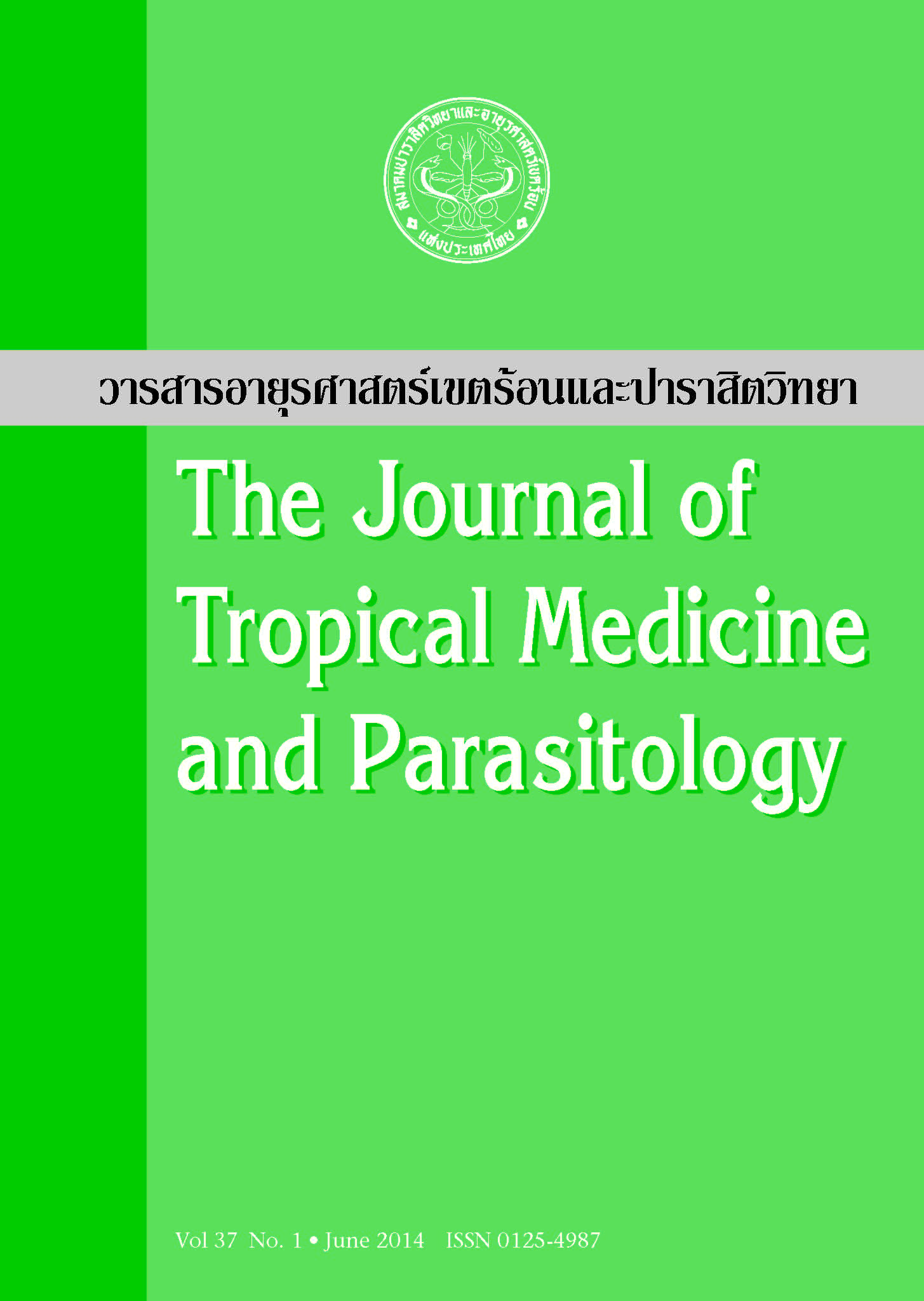Subtype identification of Blastocystis isolated from orphans, Pathum Thani Province, Thailand
Main Article Content
Abstract
Blastocystis is an intestinal protozoan that can be found in humans and many animals, such as reptiles, amphibians, poultry, and insects. Blastocystis has a worldwide distribution, and is especially common in developing countries due to poor personal hygiene practices and socioeconomic factors, such as education-level, income, and occupation. The main mode of transmission is by fecal-oral route. To date, seventeen subtypes, ST1-ST17, have been isolated from humans and animals. This study was conducted to determine the prevalence, subtype (ST), and source of Blastocystis at an orphanage in Pathum Thani Province, Thailand. Subtypes were identified by direct sequencing and polymerase chain reaction with sequence-tagged site primers (PCR-STS). Eleven bottles of drinking water from each household and canteen, 125 human fecal samples, and 4 dog fecal samples in/around the orphanage were collected. Phylogenetic analysis was used to evaluate subtype characteristics. The prevalence of Blastocystis among the Thai male orphans was 51.2% (64/125) by PCR, the highest rate reported in Thailand to date. The predominant subtype was ST3 (79.69%), followed by ST1 (18.75%), and ST2 (1.56%). All drinking water and dog fecal samples were negative for Blastocystis. The predominance of ST3 is consistent with most other findings around the world, but not with previous studies done in Thailand. ST3 is considered to be the only original human subtype, and therefore, the potential source of Blastocystis in this particular orphanage was human. It is very important to improve personal hygiene among the orphans, to promote better health and quality of life in the orphanage.
Article Details
Issue
Section
Original Articles
